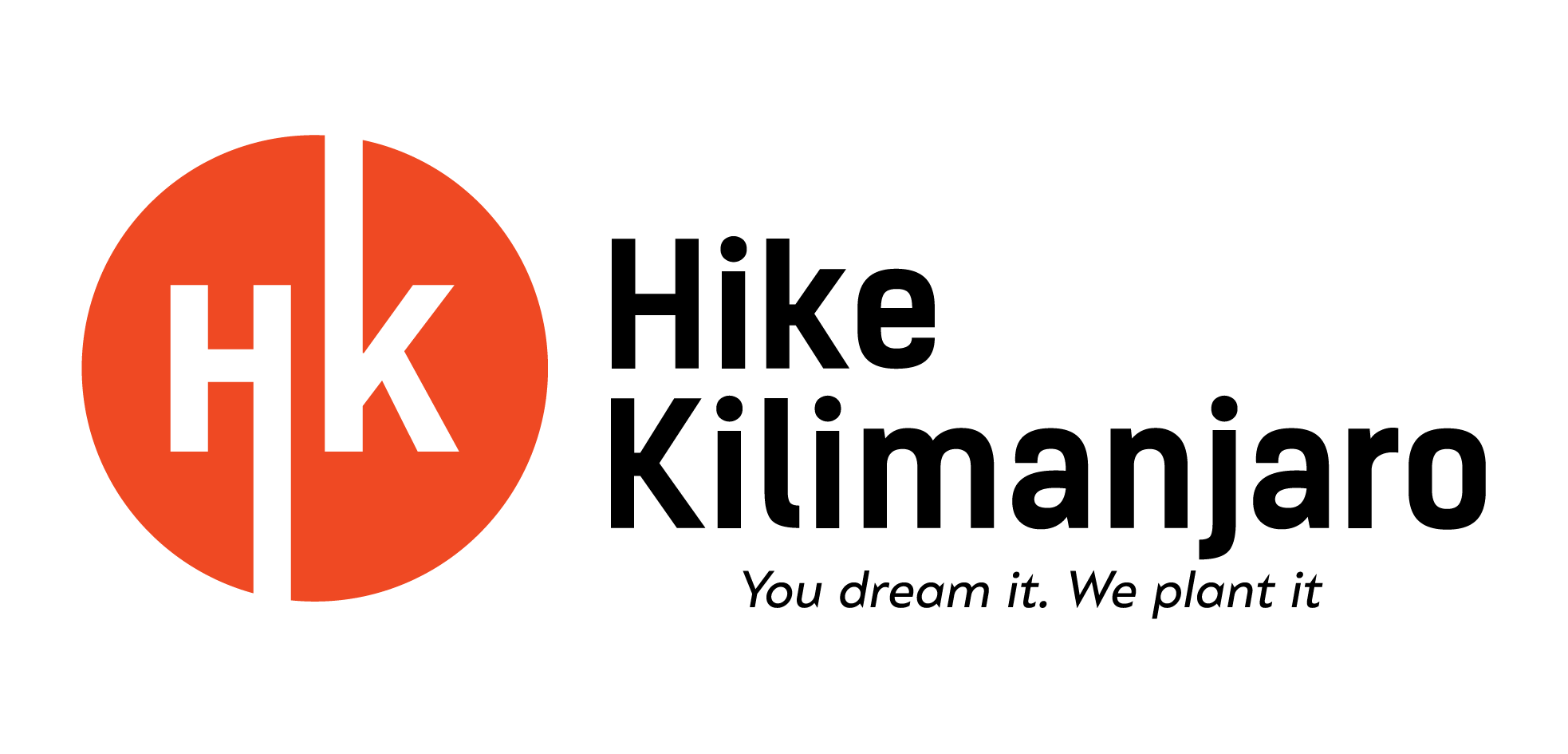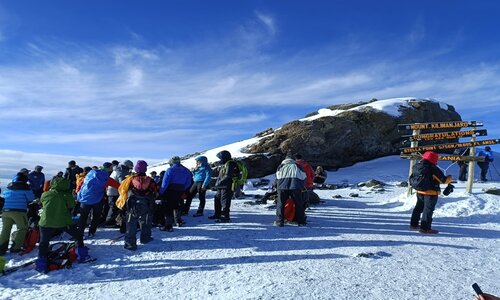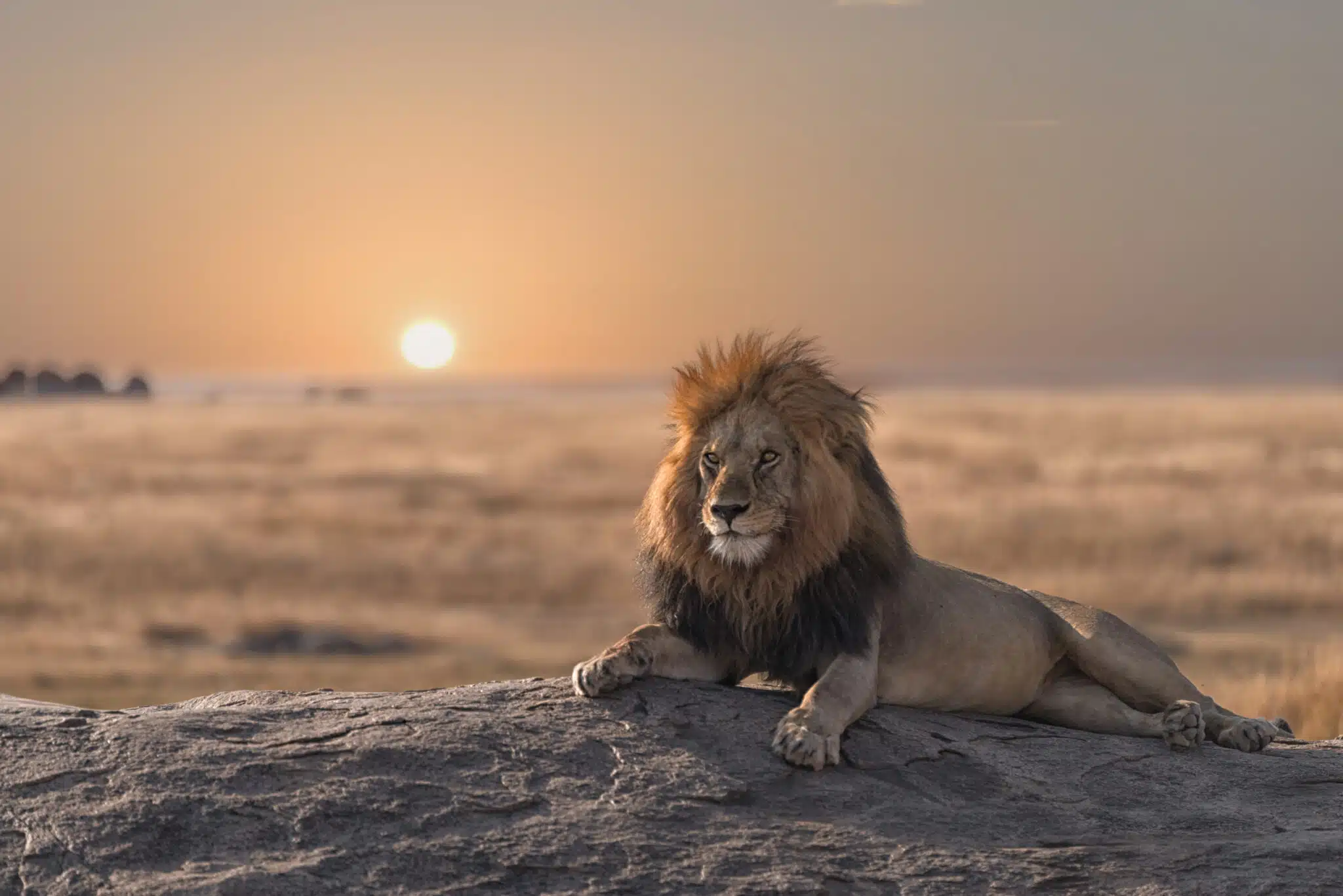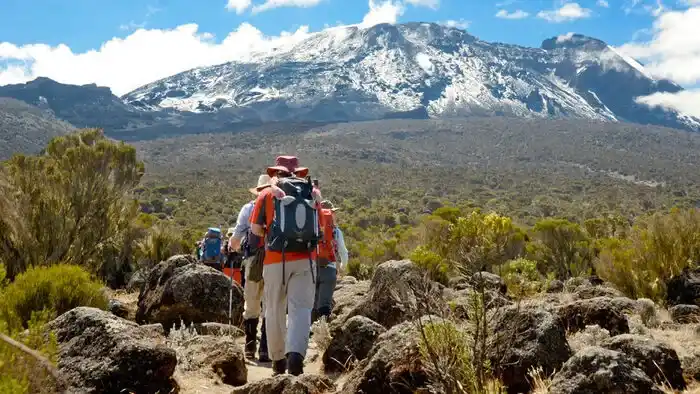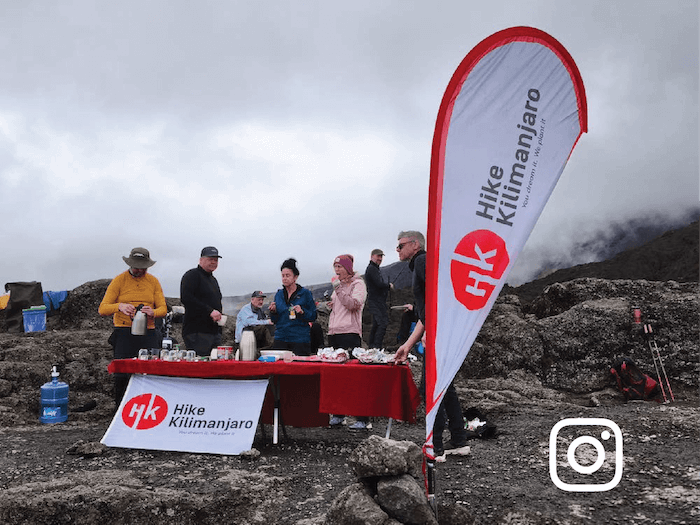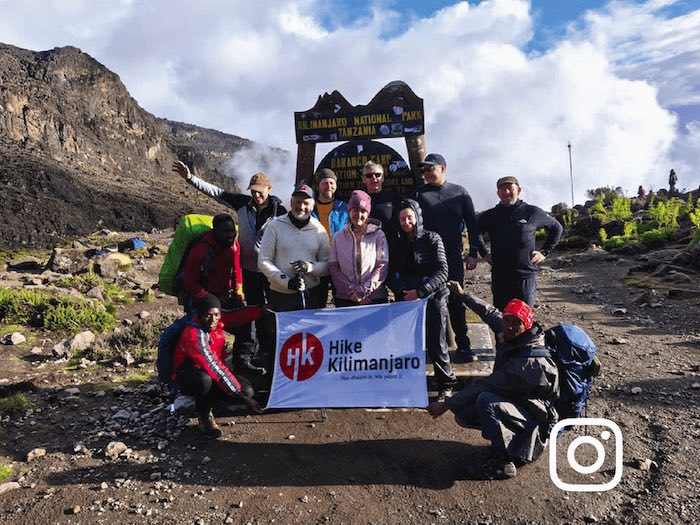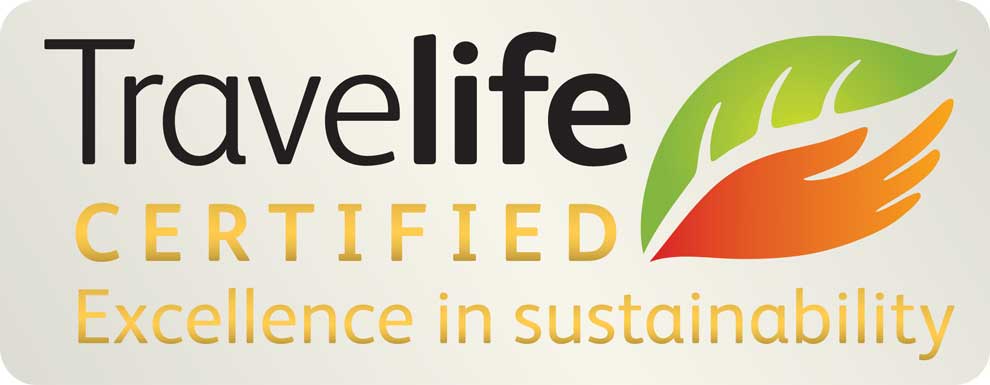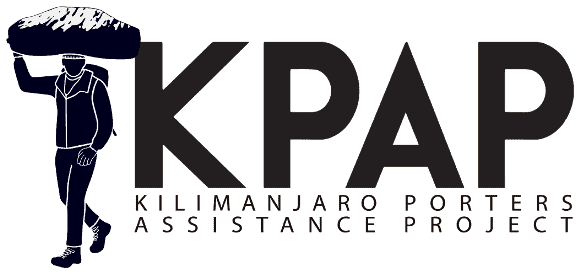Mount Kilimanjaro Rescue | How Emergency Evacuations Is Handled
Learn how Kilimanjaro rescues are managed, including helicopter evacuation, stretchers, and expert guide response. Stay safe and climb with confidence.
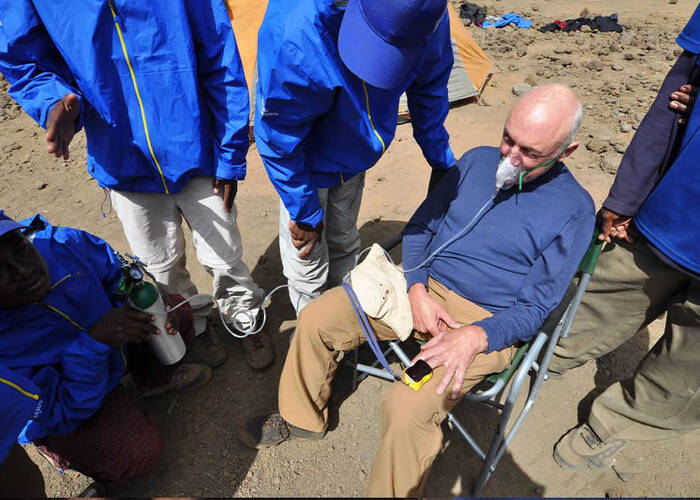
Mount Kilimanjaro Rescue: How Is It Done?
Climbing Mount Kilimanjaro is a life-changing experience, but it’s also a high-altitude expedition that comes with risks. While thousands of trekkers safely reach the summit every year, emergencies can happen. Knowing how rescue operations work on Mount Kilimanjaro can help you feel safer and more prepared before your trek.
In this article, we break down the Kilimanjaro rescue process, how guides monitor your health, when evacuations are needed, and how rescue teams respond quickly and efficiently, even at high elevations.
Is There a Rescue System on Mount Kilimanjaro?
Yes, absolutely. Mount Kilimanjaro has a well-organized rescue system in place, managed primarily by Kilimanjaro National Park (KINAPA). All climbers must be registered with the park, and every licensed operator like Hike Kilimanjaro is required to follow strict safety and rescue protocols.
If a climber falls ill or is injured, the rescue procedure is immediately activated by the guides or park rangers.
Who Responds in an Emergency?
In the event of an emergency, your mountain crew is the first line of defense. Guides from trusted operators are Wilderness First Responder (WFR) certified and trained in high-altitude illness management. They constantly monitor your vitals and symptoms using pulse oximeters and health check protocols.
When a rescue is needed, they communicate directly with KINAPA rescue units stationed at campsites across the mountain.
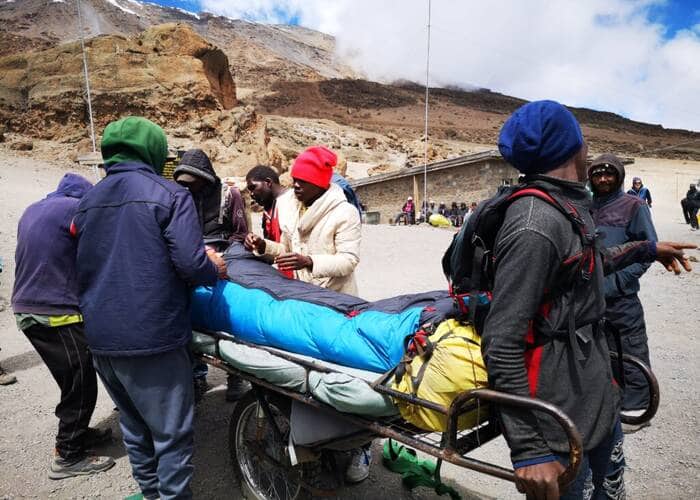
What Happens If You Get Sick or Injured?
Most issues are due to altitude sickness, fatigue, or minor injuries. If symptoms are mild, you may descend with assistance from a porter or guide. In more serious cases, a stretcher evacuation is initiated.
The stretchers used on Kilimanjaro, known as “Kilimanjaro wheelbarrow stretchers,” feature a single large wheel and shock-absorbing suspension, allowing for fast transport over rocky trails.
If a faster rescue is needed and weather permits, helicopter evacuations can be coordinated. However, helicopter rescues are only feasible from designated landing zones, typically located below 4,500 meters, and when visibility allows.
Helicopter Rescue on Kilimanjaro: How It Works
In recent years, companies like Kilimanjaro SAR (Search and Rescue) have introduced modern medical helicopters equipped for high-altitude evacuation. Suppose your operator has coverage with Kilimanjaro SAR, and you’re carrying travel insurance that includes air evacuation. In that case, a helicopter can extract you from Horombo Hut, Barranco Camp, Shira Plateau, or Karanga Camp, depending on the weather.
Important: Without insurance, a helicopter rescue can cost thousands of dollars. Always ensure your travel insurance includes emergency evacuation up to 6,000 meters.

Do You Need Insurance for Kilimanjaro Rescue?
Yes, it’s essential. Any serious evacuation, especially by helicopter, requires valid travel insurance. Look for policies that cover:
- Emergency medical evacuation
- Altitude-related illnesses
- Trip cancellation and interruption
- High-risk activities like trekking above 4,000m
You’ll need to provide your insurance details to your trekking company before your climb.
👉 Read more about Kilimanjaro Travel Insurance and why it’s critical
How Guides Help Prevent the Need for Rescue
The best way to avoid rescue is to prevent it through proper acclimatisation and expert care. That’s why choosing an experienced and ethical operator like Hike Kilimanjaro is so important.
Our guides perform twice-daily health checks, monitor oxygen saturation, encourage proper hydration, and adjust the pace based on your condition. We also prioritise longer itineraries, such as the Lemosho Route or Northern Circuit, for better acclimatisation and safety.
👉 Explore the safest Kilimanjaro routes with better summit success rates
Final Thoughts: Don’t Fear the Climb, Just Be Prepared
While the thought of rescue may sound intimidating, it’s comforting to know that Mount Kilimanjaro has a functioning, responsive, and effective rescue system. With a well-trained team, proper insurance, and safety-focused preparation, your Kilimanjaro adventure can be as secure as it is unforgettable.
Want to climb with certified guides, daily health monitoring, and full rescue coverage?
Share Your Article:
Make your dream trip come true with Hike Kilimanjaro .

5/5
Based on 100+ reviews

4.9
Based on 60+ reviews
Customized Travel Proposal
At Hike Kilimanjaro, you can tailor your trip to your preferences. Our sample itineraries are customizable, and our specialists work with you to create your dream trip!
Related posts
These full and frank reviews are from travelers who have traveled with Hike Kilimanjaro previously. The reviews and experiences shown here are from reputable travel websites like TripAdvisor, Google, Facebook, and Trust Pilot, etc.
EXCELLENTVerified "This 3-day luxury safari combined with a Kilimanjaro hike exceeded all my expectations. "This 3-day luxury safari combined with a Kilimanjaro hike exceeded all my expectations. The accommodations were elegant and comfortable, and the guides were knowledgeable and friendly. The safari offered incredible wildlife photography opportunities, and climbing Kilimanjaro was a true test of endurance and strength, but the stunning vistas made it all worthwhile. An exceptional journey that I will cherish forever."Posted onVerified "My entire expectations were surpassed by climbing Kilimanjaro. "My entire expectations were surpassed by climbing Kilimanjaro. When one reaches Uhuru Peak, the sensation of accomplishment is indescribable. Because of the well-planned logistics, the amiable crew, and the breathtaking environment, the entire hike was easy and fun. It is a very remarkable event that I would gladly repeat. For adventurers, it's a must.Posted onVerified Tanzania truly offers a world-class experience. "My trek up Mount Kilimanjaro in Tanzania exceeded all my expectations. The stunning scenery, from lush rainforests to icy glaciers, was awe-inspiring. The local guides and porters were incredibly supportive and professional, ensuring a safe and enjoyable climb. It was challenging but incredibly rewarding. Tanzania truly offers a world-class experience for anyone looking to conquer Africa’s highest peak."Posted onVerified I feel accomplished and thankful. Kilimanjaro climbing was satisfying and difficult at the same time. Along the way, there was breathtaking natural splendour and a variety of diverse habitats. The guiding team's assistance was outstanding and got us through some really difficult times. After completing this amazing journey, I feel accomplished and thankful.Posted onVerified Thanks to their knowledgeable advice. From beginning to end, Hike Kilimanjaro offered a smooth and well-planned trip. Their staff made sure we were at ease and ready by being helpful and considerate. Thanks to their knowledgeable advice, climbing Kilimanjaro was difficult but incredibly gratifying. They are the ones I would most certainly pick again for excursions in the future.Posted onVerified "An amazing and well-planned adventure. "An amazing and well-planned adventure! The climb was fun and safe because of the team's experience and upbeat demeanour. I was encouraged by the journey and pleased to have reached the top of Africa.Posted onVerified Highly recommended this tour agency. Wonderful experience! We had a fantastic trip and enjoyed the entire team; we always felt very protected and taken care of. Highly recommended. I want to thank Keddy in particular; you were the best mentors .Posted onVerified "My Kilimanjaro trek was an extraordinary experience. "My Kilimanjaro trek was an extraordinary experience. The route was well-organized, and the staff was attentive and encouraging throughout the climb. The sense of accomplishment upon standing on the summit was overwhelming. The scenery, the challenge, and the sense of connection with nature made this hike truly special. I highly recommend it to anyone looking for a once-in-a-lifetime adventure."Posted onVerified Well Organized and Unforgettable. Hiking Kilimanjaro with a well-run tour company was an incredible experience. The crew was courteous and made sure we were fed, acclimated, and inspired at every stage. The support from porters and guides, as well as the companionship among hikers, helped to make the difficult days bearable. It was weird to be at the top above the clouds. Undoubtedly a life-long accomplishment I will always treasure.Posted onVerified Top notch safari The customer service is on point. Drivers were there to pick us up on time. We saw all the big 5 in Serengeti /Ngorongoro Crater.The accommodation booked Embalakai had great food and staff.Couldn't have asked for a better safari experience. Top notch
Speak to an Expert
Need assistance with your booking? Our friendly Tanzania-based expert team is here to help. Feel free to reach out with any travel-related questions or concerns.

Maxon

- WhatsApp +255 692 406 444

